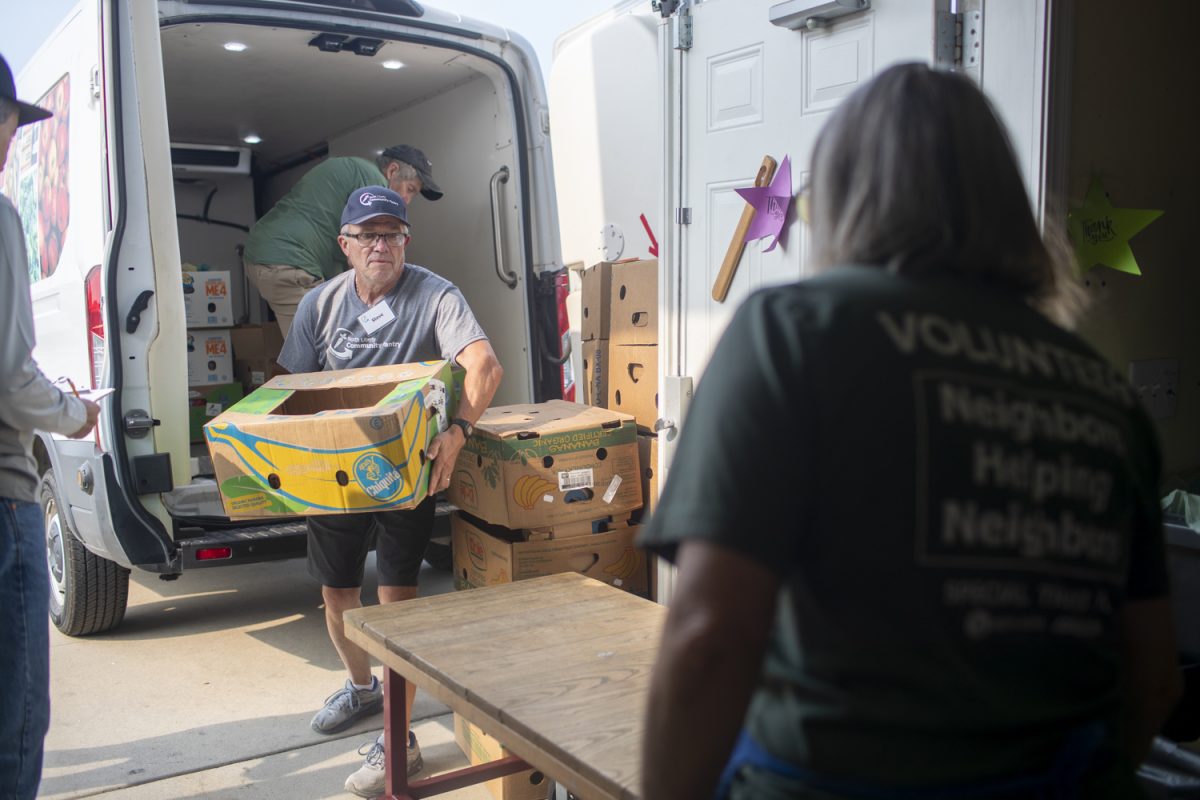After working with students while teaching a class in dancing robotics last spring, University of Iowa computer-science Lecturer Denise Szecsei wanted to continue encouraging students to code and program robots.
She believes her new project could encourage girls to be “more than consumers of technology, but creators of technology.”
“[I’ve read] lots of articles about how young girls get involved with technology when there’s a reason to do it,” Szecsei said. “Girls would be more interested in working with robots if they have a story to tell.”
Szecsei encourages students to tell a story through robotics by working with three fifth- and sixth-grade girls to program robots to perform “Green Eggs and Ham,” which will be open to the public at 1 p.m. Dec. 15 in the Theater Building’s Theater B.
Based on her research, Szecsei determined that elementary-school girls were the ideal students to work with.
She took her robots to elementary schools to see the responses of the students and discovered that most students were interested in the stories behind the robots.
One robot, named Amanda, had a posture problem. While the other robots were performing the dance perfectly, Amanda kept on falling and was unable to successfully perform the dances.
“That story made the kids get more involved,” Szecsei said. “There was an equal amount of engagement from boys and girls involving technological aspects.”
Curious, Szecsei decided to take her research one step forward and show the robots to middle-school boys and girls.
She found that middle-school girls liked to watch the robots just as much as the boys did, but they were not as interested in coding as the elementary-school girls were.
This allowed Szecsei to conclude that elementary school is the ideal age to get young girls involved in the technological aspects of learning, which is how she decided which age group to recruit for the current program.
“The first day the kids started working, they were able to get the robots to speak within five minutes,” Szecsei said.
Their success in getting the robots to speak sparked curiosity, and they were soon interested in getting the robots to do more.
“[It encourages] algorithmic thinking,” Szecsei said.
Darlene Kaskie, a research guide at the UI Law Library and a coworker of Szecsei’s, has two daughters who are involved in the project.
“The project is a fun and nonthreatening way for my daughters to become familiar with science, technology and engineering,” Kaskie said. “They use analytical thinking when programming the robots to create human-like speech and movement.”
Another one of Szecsei’s coworkers, UI computer-science Professor Cesare Tinelli, said his daughter had expressed an interest in robots prior to Szecsei’s project.
“She jumped at the opportunity to work with bigger and cooler robots like the humanoid Nao robots used by Denise,” Tinelli said. “She is really enjoying the classes with her where they have been exploring how to make the robots recite text while moving their upper body.”
Since the learning curve is so low, Szecsei hopes introducing these girls to robot coding at a young age will inspire them and allow them to envision themselves working with robots and engaging in STEM classes once they reach middle school.
“They are learning how to think algorithmically, how to get robots to move graciously and in sync with the words,” Tinelli said. “I strongly support it because it is a fun way to get girls, or boys for that matter, interested in STEM subjects.”






